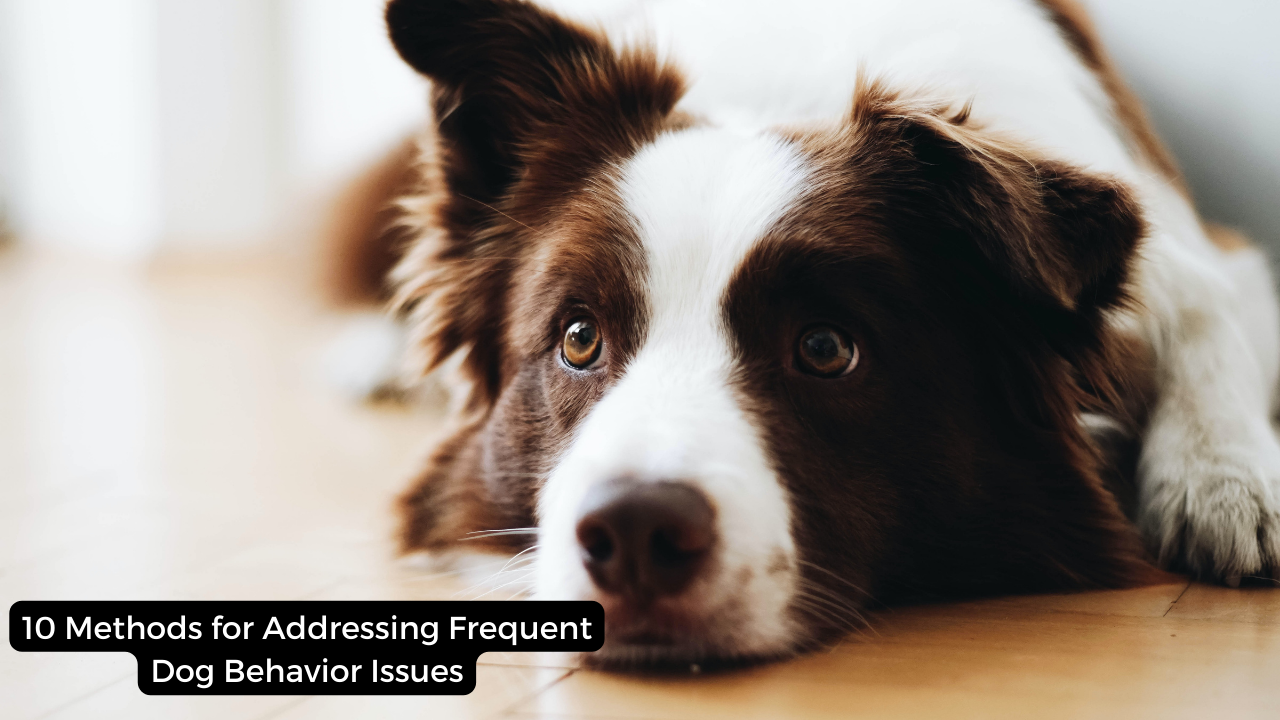Every dog owner knows that their furry companions come with their own set of quirks and behaviors. While most of these behaviors are endearing, some can become problematic if left unaddressed. From incessant barking to destructive chewing, dealing with common canine behavior issues can be a challenging task. In this article, we will explore 10 proven methods to effectively address and manage these frequent behavior problems, helping you create a harmonious and happy relationship with your four-legged friend.
Understanding Canine Behavior
Before diving into the strategies, it’s important to understand that canine behavior is often driven by a combination of factors, including genetics, past experiences, and current environment. Just like humans, dogs have their personalities, and addressing behavior issues requires patience, consistency, and a deep understanding of their needs.
1.Positive Reinforcement Training
Positive reinforcement is a powerful tool for shaping desirable behaviors in dogs. This method involves rewarding your dog’s good behaviors with treats, praise, or affection. By doing so, you create a positive association with the desired behavior, encouraging your furry friend to repeat it. For instance, if your dog struggles with leash pulling, reward them when they walk calmly beside you.
2. Socialization Techniques
Early socialization is crucial for a well-adjusted dog. Exposing your pup to various people, animals, and environments at a young age helps prevent fear and aggression issues down the line. Organized puppy classes and controlled playdates can provide controlled exposure, helping your dog become more confident and comfortable in different situations.
3. Addressing Separation Anxiety
Separation anxiety is a common issue among dogs and can lead to destructive behaviors when left alone. To address this, gradually accustom your dog to your departures. Start with short absences and gradually increase the time. Provide engaging toys or puzzle feeders to keep them occupied during your absence.
4. Consistent Routine and Structure
Dogs thrive on routine and structure. Establish a consistent daily schedule for feeding, walks, playtime, and rest. Predictability helps reduce stress and anxiety, leading to improved behavior. Just as humans find comfort in routines, dogs also feel more secure when they know what to expect.
5. Counteracting Excessive Barking
Excessive barking can be a nuisance for both you and your neighbors. Identify the triggers that lead to barking and address them gradually. Use commands like “quiet” or “enough” and reward your dog when they stop barking on command. Providing mental and physical stimulation through regular exercise can also help alleviate excessive barking.
6. Curbing Destructive Chewing
Destructive chewing is often a result of boredom or teething. To prevent this behavior, provide appropriate chew toys and rotate them regularly to keep your dog engaged. Puppy-proof your home by keeping valuable items out of reach. When you catch your dog chewing on an unauthorized item, redirect their attention to an approved toy.
7. Leash Reactivity Training
Leash reactivity, where a dog becomes overly excited or aggressive towards other dogs while on a leash, can be managed through training. Gradual desensitization involves exposing your dog to controlled situations where they can learn to remain calm. Reward them for maintaining composure and gradually decrease the distance from the trigger.
8. Dealing with Resource Guarding
Resource guarding occurs when a dog becomes possessive over food, toys, or other items. Teach your dog to associate your approach with positive things by giving treats or toys when you’re near their possessions. This helps them learn that your presence equals good things, reducing guarding behaviors.
9. Handling Fear and Phobias
Fear of thunderstorms, fireworks, or other loud noises is common among dogs. Create a safe space for your dog to retreat to during these events, and consider using pheromone diffusers or calming music. Desensitization involves gradually exposing your dog to the fearful stimulus at a low intensity and rewarding calm behavior.
10. Seeking Professional Help
If your dog’s behavior issues seem overwhelming or dangerous, don’t hesitate to seek professional help. A certified dog trainer or behaviorist can assess your dog’s behavior, identify underlying causes, and develop a tailored training plan to address the issues effectively.
Conclusion
Understanding and addressing common canine behavior problems requires a combination of patience, consistency, and effective training methods. By using positive reinforcement, socialization, and a deep understanding of your dog’s needs, you can foster a healthy and happy relationship with your furry companion.
